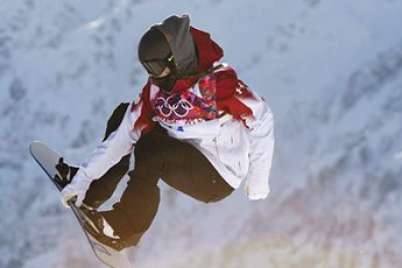
Tips from a Team Canada athlete: How letting your child try everything can lead to a new passion
As a child, Tiffany Leung often daydreamed of one day going to the Olympics, describing herself as “obsessed” with gymnastics.
While she stopped taking gymnastics classes at the age of 13 after 10 years in the sport, she was always an active kid. From piano to tennis, violin to basketball, kung fu to gymnastics, and rugby to dance, Leung was always on the go. She also remembers a lot of time spent at the playground and running to school because she was always late!
In high school, Leung joined a dance club for fun and decided she would do the same when she went to university. She found a dance group during orientation week at Queen’s University in 2013. At the first class, a girl did footwork Leung had never seen before. This was her first introduction to breaking (a dance form you might remember as breakdancing).
When she saw it, Leung says, she “instantly fell in love.” And her journey in breaking began.
Leung notes that breaking gives her “the same feeling that I got from gymnastics. How high can I jump? How many flips can I do? When you learn a skill, you upgrade it, it becomes more and more advanced and that progress feels very good.”
Today, Leung, known by her breaking name, B-Girl Tiff, is excited that breaking is making its debut at the Olympic Games Paris 2024.
Yes! There’s a new Olympic sport coming to the Games for the first time, and it’s sure to bring even more vibrancy and excitement. Breaking is a high-energy, lively, explosive, and stylistic combination of athleticism and artistic talent. Get ready to witness the incredible creativity of powerful athletes competing for gold.
What is breaking and how do competitions work?
Breaking is a creative combination of dance moves performed by competitors known as B-Girls and B-Boys. The participants face off in head to head (or 1 v 1) “battles” in two categories, one for women and one for men.
Each athlete has 60 seconds to impress a panel of judges with their individual style and moves performed to a musical track a DJ picks on the spot. Judges base their scores on creativity, personality, technique, variety, performativity, and musicality.
Breaking moves
Moves typically fall into the following categories:
Top rock
These are the actions that athletes perform at the beginning of their solos while standing. There are so many moves, including the front step, crossovers, hustles, corkscrews, and boxsteps. See if your child (and you!) can perform any of these top rock moves:
Down rock
Down rock (sometimes referred to as footwork or floorwork) are moves all performed on the floor, with breakers using their hands for support and moving their legs in a variety of manoeuvres, such as the six-step, the three-step, the shuffle, hooks, and CCs.
Freezes
Freezes are an amazing display of a breaker’s balance, strength, and flexibility. These are a few seconds when a breaker stops moving during their set and freezes in one position or shape. There are some really inventive freezes, including the baby freeze, the air freeze, the flag, the chair freeze, and the bicycle.
Power moves
Power moves are dynamic and acrobatic moves that have breakers continuously spinning on different parts of their bodies. The number of types of moves is practically endless as breakers can move between spinning on their backs, elbows, knees, and heads in a variety of positions and directions. Power moves include (and some of the names of the moves are awesome!): windmills, flares, UFOs, eggbeaters, gremlins, crickets, turtles, and halos.
Every breaker has their own dance style and unique expression of their creativity. Trying to stand out from the crowd, each competitor uses a combination of top rock, down rock, freezes, and power moves to impress the judges and the crowd.
Leung’s tips for parents & kids
- Cast a wide net and let your kids figure out what they’re passionate about and then do what you can to support them in that field to grow that passion. “I was fortunate that my parents let me try anything and then from everything, I got to choose what I was passionate about,” she says.
- Help pique your kids’ interest by bringing them to these different sports and activities, especially with friends.
- If your child wants to stop playing a sport, there might be a reason not even related to the sport (ie. a soured relationship with a friend at practice). Speak to your kids to know what’s happening and what it is that might have turned them off. Help work with them to make a choice based on what’s happening. It might just be that they want to leave a sport that they’re actually very passionate about.
- Sometimes your child might discover a sport or activity that’s adjacent to what they liked playing/doing. If you keep your eyes peeled, you might just find an activity that your child will love even more! “Breaking, for example,” notes Leung, “has a number of features of gymnastics which I loved.”
Leung firmly believes that breaking at the Olympics is “going to be something special and an opportunity to inspire the next generation. If I had seen this at the Olympics 10 years ago, I would have started right then and there.”
Breaking events will take place at the Olympics on Aug. 9 and 10. To try it at home, check out this great resource on breaking.
Photo of Tiffany Leung: Candice Ward/Canadian Olympic Committee





